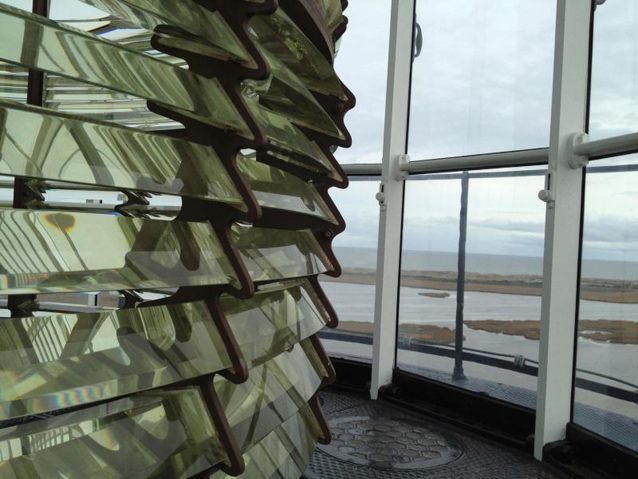
National Park Service
Developed by French physicist Augustin Jean-Fresnel in the early 1820s, the Fresnel lens revolutionized lighthouses throughout the world. Its deceptively simple design meant that light could travel much farther from a lighthouse beam than with a conventional lens. Six types of Fresnel lenses were manufactured for lighthouses in the 1800s, sixth-order, fifth-order, fourth-order, third-order, second-order, and first-order, each one improving upon the other in terms of beam power and range.
In short, a Fresnel lens is much thinner than a conventional lens, using prisms to refract light to the center of the lens, where it is concentrated into a powerful beam.
The first Bodie Island Lighthouse, completed in 1847, used Argand reflector lamps until 1854, less powerful than a Fresnel lens. In 1854, a fourth-order Fresnel lens was installed, dramatically improving the range of the beam. The second tower, completed in 1859, included a third-order Fresnel lens with a range of 15 miles. The third (and current) Bodie Island Lighthouse, completed in 1872, houses the most powerful first-order Fresnel lens, with a range exceeding 18 miles.
Last updated: August 16, 2017
